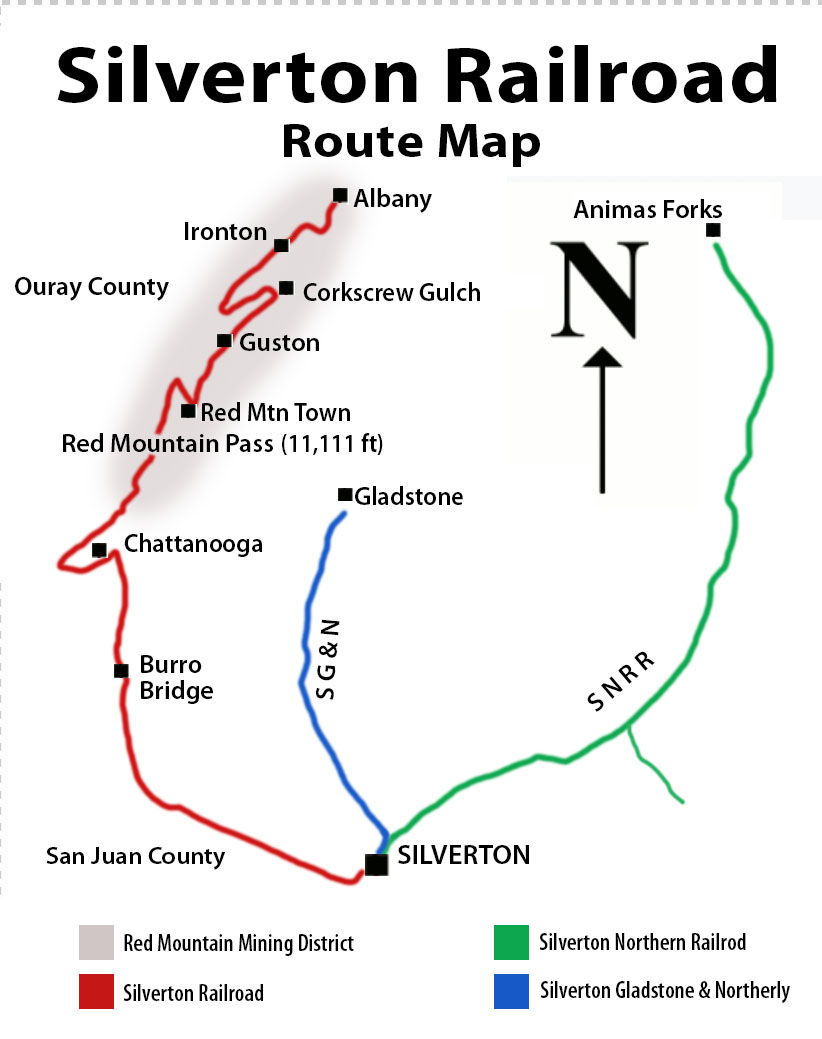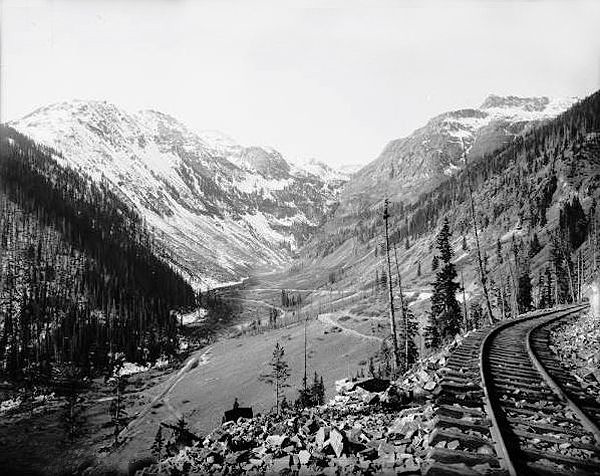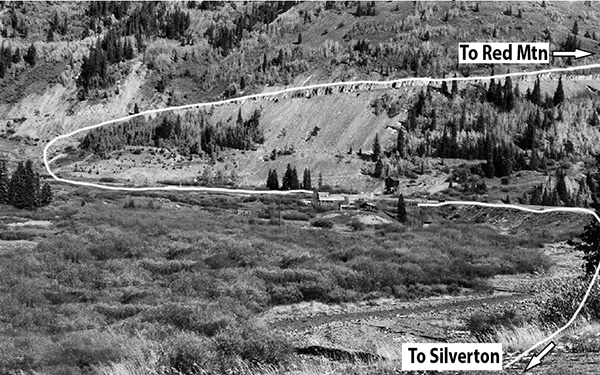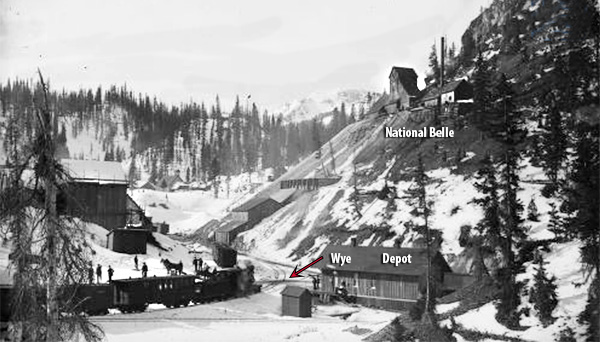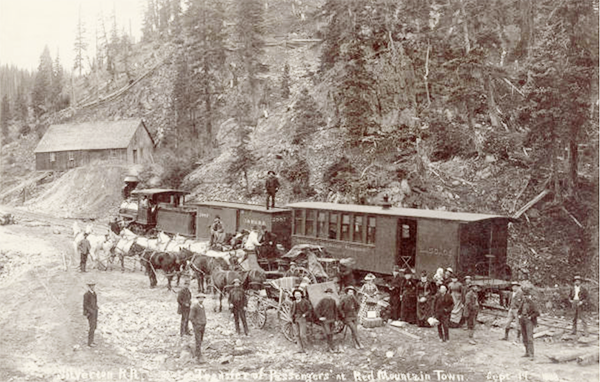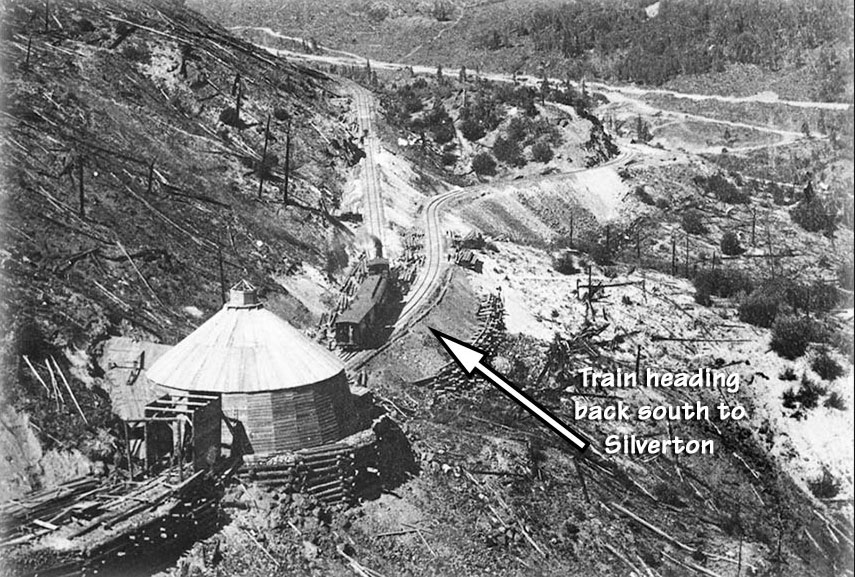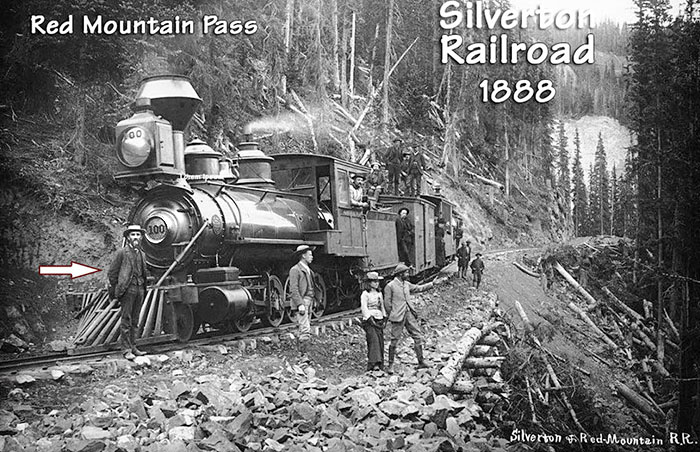References and Resources
Books
Crum, Josie Moore. (1960) Rails Among the Peaks Three Little Lines-Silverton Railroad; Gladstone and Northerly Railroad, Silverton Northern Railroad. The Railway and Locomotive Historical Society.
Fielder, John and Noel, Thomas; Colorado, 1870-2000, Revisited: The History Behind the Images, John Fielder Publishing, 2001.
Nossaman, Allen. (1989). Many More Mountains. VOL. 1: Silverton’s Roots. Sundance Publications. ISBN 9780913582572
Nossaman, Allen. (1993). Many More Mountains. VOL 2: Ruts Into Silverton. Sundance Publications. ISBN 10: 0913582573
Nossaman, Allen. (1998). Many More Mountains. VOL 3: Rails Into Silverton. Sundance Publications. ISBN 9780913582640
Osterwald, Doris B. (2001). Cinders & Smoke: A Mile by Mile Guide for the Durango and Silverton Narrow Gauge Railroad. Western Guideways. p. 80. ISBN 9780931788802.
Sloan, Robert E., and Carl A. Skowronski (1975). The Rainbow Route: An Illustrated History. Denver: Sundance Limited. ISBN 0913582123.
Stone, Wilbur Fiske (1918). History of Colorado. S.J. Clarke. Retrieved 20 April 2009. silverton railroad.
Strong, William K. (1988). The Remarkable Railroad Passes of Otto Mears. Silverton, Colorado: San Juan County Book Company. ISBN 0-9608000-6-9.
Wilkins, Tivis E. (Tiv) (1974). Colorado Railroads: Chronological Development. Boulder, Colorado: Pruett Publishing Company. ISBN 0-87108-073-7.
Magazine & Newspaper Articles
“Corkscrew Gulch Turntable, 1899” Durango Herald. Staff article.
https://www.durangoherald.com/articles/photo-corkscrew-gulch-turntable-1899
“Hardrock History, A Tale of Booms & Busts.” By Scott Fetchenhier, Silverton Magazine (2010). San Juan Publishing Group, Inc.
https://www.sanjuanpub.com/silverton-magazine/silvertons-mining-heritage-museum/
“ Legendary places: Corkscrew Gulch Turntable, Classic Trains Magazine. (Dec. 15, 2012). Posted by gbrewer https://cs.trains.com/
“Otto Mears, Pathfinder of the San Juans” by Beverly Rich. Silverton Magazine (2010).
https://www.sanjuanpub.com/silverton-magazine/otto-mears/
“Silverton’s 4 Railroads” by Beverly Rich. Silverton Magazine (2010). San Juan Publishing.
https://www.sanjuanpub.com/silverton-magazine/silvertons-4-railroads/
“The Narrow Gauge Circle: A thousand miles by rail through the Rocky Mountains!” https://www.narrowgauge.org/
Website written, maintained, and hosted by Mark L.Evans.
“The Silverton Train” by James Burke, Silverton Magazine (2010) San Juan Publishing
Websites
“The Silverton Railroad of the San Juan Mountains.” Legends of America.
https://www.legendsofamerica.com/silverton-railroad
Uncover Colorado, Ghost towns
https://www.uncovercolorado.com/ghost-towns
Western History Collection, Denver Public Library
https://digital.denverlibrary.org/digital/collection
Western Mining History. Mining Towns, Mines.
https://westernmininghistory.com/towns/colorado
“The Silverton Railroad…the Rainbow Route.” The Narrow Gauge Circle. Hosted by Mark L Evans.
https://www.narrowgauge.org/
Center of Southwest Studies, Fort Lewis Collage
https://swcenter.fortlewis.edu
Wikipedia
https://en.wikipedia.org/wiki/Panic_of_1893
https://en.wikipedia.org/wiki/Red_Mountain_Pass_(San_Juan_Mountains)
https://en.wikipedia.org/wiki/Rio_Grande_Southern_Railroad
https://en.wikipedia.org/wiki/Sherman_Silver_Purchase_Act
https://en.wikipedia.org/wiki/Silverton_Railroad

